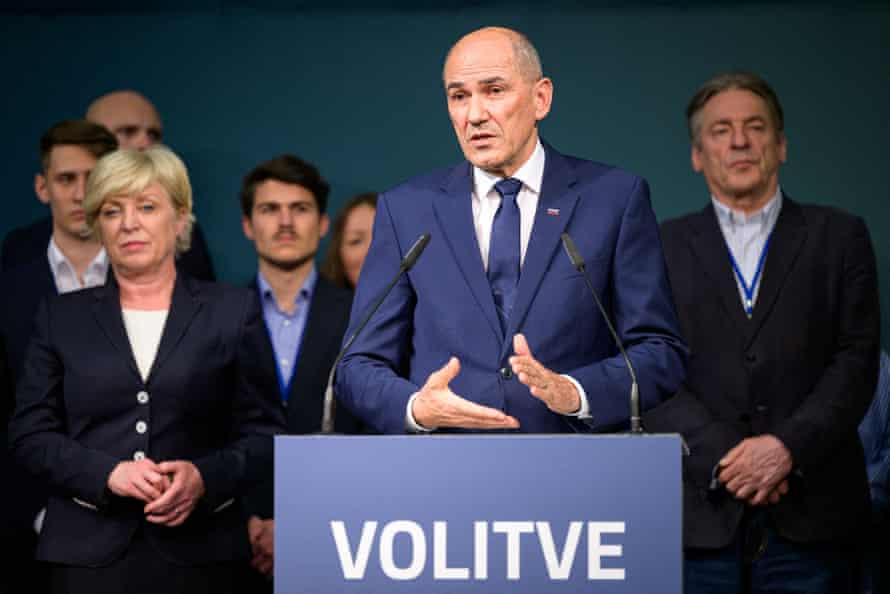Breakthrough in estimating fossil fuel carbon dioxide emissions

A team of scientists led by the University of East Anglia (UEA) has made a major breakthrough in detecting changes in fossil fuel carbon dioxide emissions more quickly and frequently.
In a study published today they quantified regional fossil fuel CO2 emissions reductions during the COVID-19 lockdowns of 2020–2021, using atmospheric measurements of CO2 and oxygen (O2) from the Weybourne Atmospheric Observatory, on the north Norfolk coast in the U.K.
The estimate uses a new method for separating CO2 signals from land plants and fossil fuels in the atmosphere. Previously it has not been possible to quantify changes in regional-scale fossil fuel CO2 emissions with high accuracy and in near real-time.
Existing atmospheric-based methods have largely been unsuccessful at separating fossil fuel CO2 from large natural CO2 variability, so that estimates of changes, such as those occurring in response to the lockdowns, must rely on indirect data sources, which can take months or years to compile.
The atmospheric O2-based method, published in the journal Science Advances, is in good agreement with three lower frequency U.K. emissions estimates produced during the pandemic by the Department for Business, Energy and Industrial Strategy, the Global Carbon Budget and Carbon Monitor, which used different methods and combinations of data, for example those based on energy usage.
Crucially, as well as being completely independent of the other estimates, this approach can be calculated much more quickly.
The researchers are also able to detect changes in emissions with higher frequency, such as daily estimates, and can clearly see two periods of reductions associated with two U.K. lockdown periods, separated by a period of emissions recovery when COVID restrictions were eased, during the summer of 2020.
Researchers at UEA—home of the U.K.'s only high-precision atmospheric O2 measurement laboratory—worked with colleagues at Wageningen University in the Netherlands and the Max Planck Institute for Biogeochemistry, Germany.
The study's lead author, Dr. Penelope Pickers, of UEA's Center for Ocean and Atmospheric Sciences, said: "If humans are to reduce our CO2 emissions from fossil fuels and our impact on the climate, we first need to know how much emissions are changing.
"Our study is a major achievement in atmospheric science. Several others, based solely on CO2 data, have been unsuccessful, owing to large emissions from land plants, which obscure fossil fuel CO2 signals in the atmosphere.
"Using atmospheric O2 combined with CO2 to isolate fossil fuel CO2 in the atmosphere has enabled us to detect and quantify these important signals using a 'top-down' approach for the first time. Our findings indicate that a network of continuous measurement sites has strong potential for providing this evaluation of fossil fuel CO2 at regional levels."
Currently, fossil fuel CO2 emissions are officially reported with a "bottom-up" approach, using accounting methods that combine emission factors with energy statistics to calculate emissions.
These are then compiled into national inventories of estimated greenhouse gas (GHG) emissions to the atmosphere from anthropogenic sources and activities, such as domestic buildings, vehicles, and industrial processes.
However, inventories can be inaccurate, especially in less developed countries, which makes it more difficult to meet climate targets.
It can also take years for the inventory assessments to be completed, and at the regional scale, or on a monthly or weekly basis, the uncertainties are much larger.
An alternative method of estimating GHG emissions is to use a "top-down" approach, based on atmospheric measurements and modeling.
The U.K. emissions inventory is already successfully informed and supported by independent top-down assessments for some key GHGs, such as methane and nitrous oxide.
But for CO2, the most important GHG for climate change, this has never before been feasible, because of the difficulties distinguishing between CO2 emissions from fossil fuels and land plant sources in the atmosphere.
Dr. Pickers said: "The time taken for inventories to be completed makes it hard to characterize changes in emissions that happen suddenly, such as the reductions associated with the COVID pandemic lockdowns.
"We need reliable fossil fuel CO2 emissions estimates quickly and at finer scales, so that we can monitor and inform climate change policies to prevent reaching 2°C of global warming.
"Our O2-based approach is cost-effective and provides high frequency information, with the potential to provide fossil fuel CO2 estimates quickly and at finer spatial scales, such as for counties, states or cities."
The team used 10 years of high-precision, hourly measurements of atmospheric O2 and CO2 from Weybourne Atmospheric Observatory, which are supported by the U.K.'s National Center for Atmospheric Science. Having long-term measurements of these climatically important gases was crucial to the success of the study.
To detect a COVID signal, they had to first remove the effects of atmospheric transport on their O2 and CO2 datasets, using a machine learning model.
They trained the machine learning model on pre-pandemic data, to estimate the fossil fuel CO2 they would have expected to observe at Weybourne if the pandemic had never occurred.
They then compared this estimate to the fossil fuel CO2 that was actually observed during 2020-2021, which revealed the relative reduction in CO2 emissions.
"Novel quantification of regional fossil fuel CO2 reductions during COVID-19 lockdowns using atmospheric oxygen measurements," by Penelope A. Pickers et al., is published in Science Advances on Friday, April 22, 2022Video: Counting carbon
More information: Penelope A. Pickers, Novel quantification of regional fossil fuel CO2 reductions during COVID-19 lockdowns using atmospheric oxygen measurements, Science Advances (2022). DOI: 10.1126/sciadv.abl9250. www.science.org/doi/10.1126/sciadv.abl9250
Journal information: Science Advances
Provided by University of East Anglia
Britain's ETS CO2 emissions reached 107.8 million tonnes in 2021
By Reuters • Updated: 22/04/2022
LONDON -Carbon dioxide emissions covered by Britain’s emissions trading scheme (ETS) in the first year of its operation in 2021 were 107.8 million tonnes, the UK ETS Authority said.
The UK ETS – a scheme to incentivise big polluters to cut emissions by forcing them to buy permits to release CO2 – replaced the UK’s participation in the European Union’s ETS on Jan. 1, 2021.
It applies to energy intensive industries, the power generation sector and aviation. The first phase of the UK ETS will run until 2030.
UK government data shows that total greenhouse gas emissions in Britain in 2020 were estimated at about 405.5 million tonnes, down around 10% from the previous year, of which CO2 emissions made up around 79% of the total.
“As a result of changes to aviation and stationary scope, UK ETS emissions and UK emissions under the EU ETS are not directly comparable,” the UK ETS Authority said.
Under the EU scheme, emissions for aviation operators are recorded by origin of operator. But under the UK ETS, the rules capture UK domestic flights, flights between the UK and Gibraltar, and flights departing the UK to the European Economic Area by all aircraft operators, regardless of country of origin.
We can now tell how much CO2 in the air is due to fossil fuel burning
A way of distinguishing between natural carbon dioxide emissions and those from burning fossil fuels could help cities and countries monitor their progress in cutting emissions
22 April 2022

Ratcliffe-on-Soar coal power station in the UK
eye35.pix/Alamy
A way of directly measuring the carbon dioxide released by burning fossil fuels could help cities and countries monitor their efforts to reduce emissions in near real time.
“We are in a shrinking window of time to do this, so I think we really need to know what the situation is as quickly and as accurately as possible,” says Penelope Pickers at the University of East Anglia, UK.
At present, governments and research organisations estimate countries’ overall emissions based on data such as how much oil or gas has been sold. While initial estimates are often made fairly quickly, it can take years to fully compile this information and estimates can vary substantially.
Measuring fossil fuel emissions directly would help confirm the accuracy of these inventory-based estimates and reveal more quickly if emission-reduction policies are working or not. It could also enable us to track how much specific regions or cities are emitting.
But such measurements are extremely difficult, because plants take up or release varying amounts of CO2 as the seasons shift and weather changes. It is like standing on a beach and immediately trying to tell whether the tide is going in or out, as waves are constantly coming and going.
So, while the long-term global rise in atmospheric CO2 due to human activity – from around 280 parts per million before the industrial revolution to nearly 420 ppm today – is crystal clear, the short-term, regional picture is much less so.
Researchers have tried various ways of directly measuring fossil fuel emissions. One is to determine what proportion of CO2 is in the form of the radioactive isotope carbon-14, which isn’t found in fossil fuels because it decays over time, and oil and gas supplies are millions of years old. But this requires the collection of samples in flasks, so continuous measurement isn’t possible. What’s more, some types of nuclear reactors emit carbon-14, obscuring the picture.
Pickers’s team has used an alternative approach based on measuring both atmospheric oxygen and CO2 simultaneously. When plant matter is used as food, or it decays or burns, the ratio of the oxygen lost from the atmosphere to increased CO2 is around 1.1. For coal, it is around 1.2 and for gas it is 2.
The researchers used measurements taken at the Weybourne Atmospheric Observatory on the Norfolk coast to calculate emissions from the southern UK since 2020. They used machine learning to estimate how changes in weather and wind direction affect oxygen and CO2 levels in the area.
The team was able to detect falls in fossil fuel emissions during the first and second covid-19 lockdowns in England. “Covid has been a great example of a quite sudden, abrupt change,” says Pickers.
With around four observatories, it would be possible to measure emissions from Britain, she says. More would be needed to monitor individual cities.
The study makes a strong case that the method is effective, says Brad Weir at the NASA Goddard Space Flight Center in Maryland. But building monitoring stations around the world would take a lot of time and money, he says.
“If we are going to have a fossil-fuel-carbon-monitoring system, it’s going to start with satellites,” says Weir.
His team reported last year that falls in carbon dioxide emissions due to the pandemic were detectable using existing CO2-sensing satellites, and there are plans to launch more missions focused on detecting this gas in the coming years.
Pickers says the problem with satellites is that they can’t detect CO2 through clouds and can’t distinguish between biological and fossil fuel emissions. Instead, satellite estimates rely on computer models of natural processes to determine fossil fuel emissions.
But these models are informed by data and can be highly accurate, says Weir, who points out that Pickers’s team relies on the “black box” of machine learning.
Ultimately, the best results may come from using all the different methods. “We should go for a combined approach,” says Pickers.
“We are going to have to integrate all of these observations,” says Weir.
Journal reference: Science Advances, DOI: 10.1126/sciadv.abm3952
Sign up to our free Fix the Planet newsletter to get a dose of climate optimism delivered straight to your inbox, every Thursday














